Picking the perfect brake pads for your ride has an influence on how safe you are, how well your whip handles, and what you’ll shell out over time. You’ve got a whole menu, from wallet-easy organic pads to fancy ceramic or semi-metallic types. To get why budget brake pads ain't the same as the pricier […]
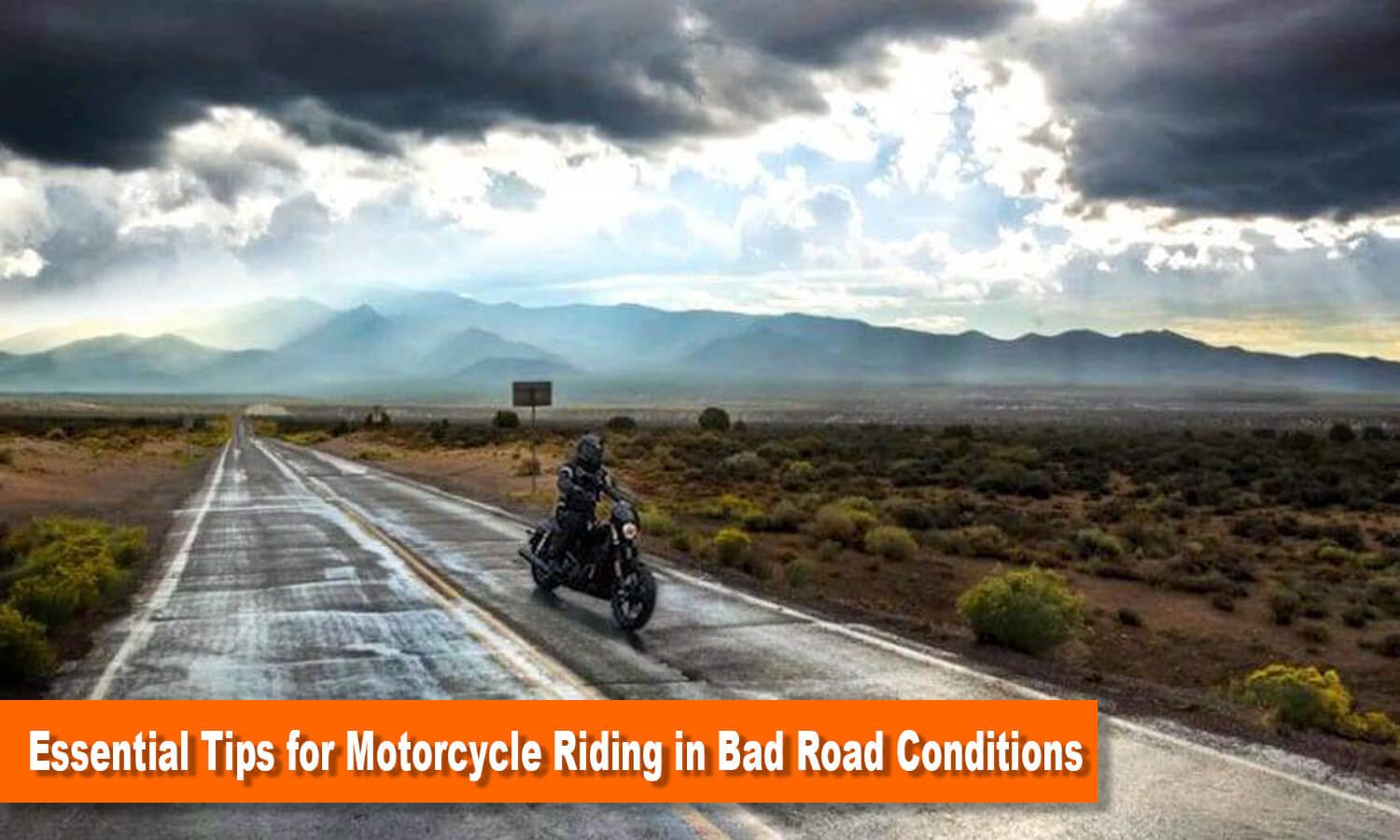
Essential Tips for Motorcycle Riding in Bad Road Conditions
Riding a motorcycle is an exhilarating experience, but bad road conditions can turn it into a daunting challenge. Whether you’re facing rain, gravel, potholes, mud, or snow, being prepared is the key to staying safe.
This guide provides essential tips for motorcycle riding in adverse conditions, ensuring you stay safe while enjoying the ride.
Table of Contents
Why Bad Road Conditions Demand Extra Caution
Motorcycles are inherently less stable than cars, making them vulnerable to road hazards.

common adverse conditions
Common bad road conditions include:
- Wet or Slippery Surfaces: Rain, oil spills, or wet leaves can reduce tire traction, increasing the risk of skidding.
- Uneven or Damaged Roads: Potholes, gravel, and uneven pavement can destabilize a motorcycle.
- Debris: Objects like branches, rocks, or litter can obstruct paths and cause accidents.
- Low Visibility: Fog, heavy rain, or inadequate lighting can impair vision, making it harder to see and be seen.
The National Highway Traffic Safety Administration (NHTSA) says about 25% of motorbike crashes happen cuz of sketchy road situations, such as slippery roads or junk on the way. Stuff like bad light, not enough grip, and stuff popping up outta nowhere make things riskier. But, if you snag the proper skills and kit, you stand a better chance of dodging these hazards and having a cool safe trip.
1. Pre-Ride Preparation: Your First Line of Defense
Before hitting the road, perform a T-CLOCS check (Tires, Controls, Lights, Oil, Chassis, Stands):
Check Your Tires
- Tread Depth: Old tires don't do well on slick or bumpy roads. Swap them out when the tread gets less than 2/32 inches (1.6 mm).
- Pressure: Tires that aren't full enough lose traction, and the ones too full might slide around. For sure readings, go with a tire pressure monitor (TPMS).
- Tire Type: Opt for all-weather or dual-sport tires if you frequently ride in mixed conditions(designed for mixed terrain, with deeper treads to channel water and grip loose surfaces).
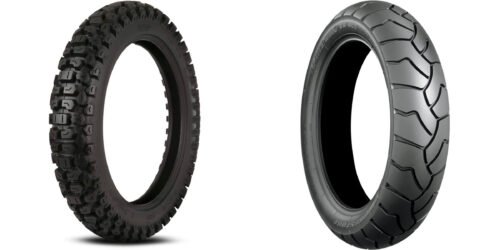
all-weather and dual-sport tires
Inspect Brakes and Suspension
- Test brakes for responsiveness. Consider ABS (Anti-Lock Braking Systems), which prevents wheel lockup on slippery roads.
- Ensure suspension is adjusted to handle bumps without bottoming out.
Weather Check
- Use apps like AccuWeather or Windy to anticipate rain, ice, or storms. Avoid riding if conditions are extreme.
Plan Your Route
- Use apps like Google Maps or Waze to check for road closures, construction zones, or weather alerts. Avoid poorly maintained backroads if possible.

use apps to plan your route
2. Riding in Rain: Conquering Wet Roads
Rain reduces visibility and traction. Here’s how to adapt:
Slow Down and Increase Following Distance
Reduce speed by 1/3 on wet roads.
Maintain a 4-second gap from vehicles ahead to account for longer stopping distances.
Avoid Hydroplaning
- Hydroplaning occurs when tires lose contact with the road. If it happens:1. Ease off the throttle. 2. Keep the bike upright; avoid sudden turns.
- Ride in the tracks of cars where water is less pooled.
Stay Visible
Wear reflective gear and use high-beam lights (during daylight) to combat gray, overcast skies.
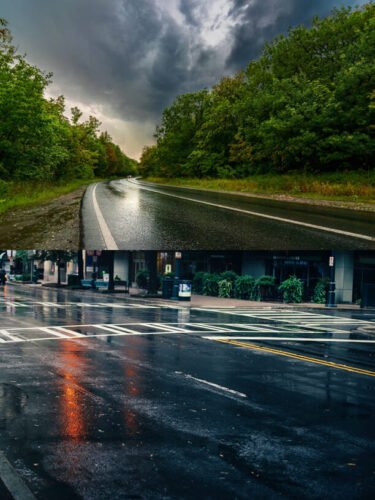
wet rainy roads
3. Gravel and Lose Surfaces: Balance is Key
Gravel, sand, or dirt roads demand precise control.
Adjust Speed and Posture
- Slow down before entering gravel zones.
- Stand slightly on the footpegs to absorb shocks and keep the weight centered.
Throttle and Brake Smoothly
- Sudden acceleration or braking can cause slips. Roll the throttle gently and use the rear brakes more than the front.
Choose the Right Path
- Stick to compacted tracks rather than loose edges.
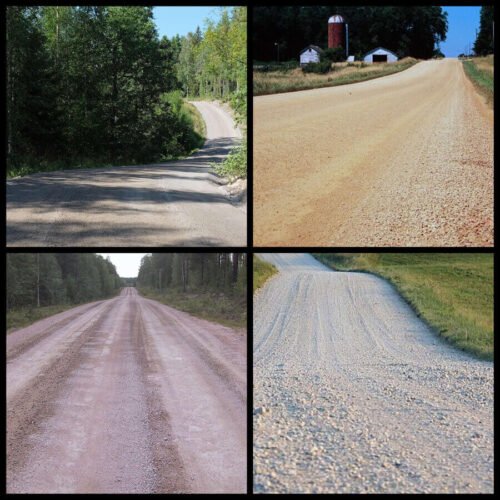
Gravel and Lose Surfaces
4. Potholes and Obstacles: Dodge or Absorb?
Potholes can damage wheels or throw you off balance.
Scan the Road Ahead
- Look 12–15 seconds ahead to spot hazards early.
Minimize Impact
If you can’t avoid a pothole:
- Rise slightly off the seat.
- Grip the tank with your knees.
- Maintain a steady throttle to stabilize the bike.
- If unavoidable, approach at a 90-degree angle to minimize tire pinch.
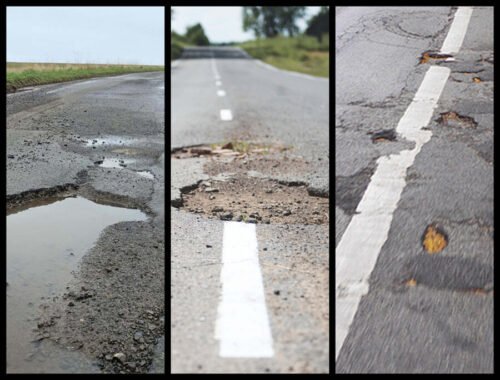
potholes can damage wheels or throw you off balance
5. Mud and Wet Leaves: Traction Tactics
Mud and leaves are deceptively slippery.
Reduce Speed and Stay Straight
- Avoid leaning or sharp turns.
- Use engine braking to slow down gradually.
Weight Distribution
- Shift weight backward to prevent front-wheel slides.
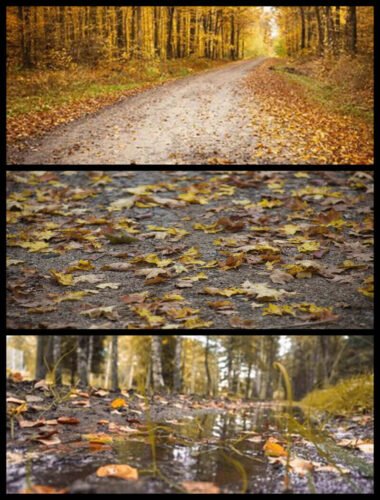
mud and wet leaves on roads
6. Snow and Ice: Proceed with Extreme Caution
Snow riding is risky but manageable with caution.
Fit Winter Tires or Chains
- Studded tires or tire chains improve grip on ice.
Smooth Movements
- Accelerate, brake, and turn gradually to avoid skidding.
Avoid Riding at Night
- Ice patches are harder to spot in the dark.

snow riding is risky but manageable with caution
7. Essential Gear for Bad Conditions
Invest in gear that enhances safety and comfort.
Helmet with Anti-Fog Visor
- Choose helmets with Pinlock inserts or built-in ventilation.
Waterproof Riding Suit
- Look for Gore-Tex or laminated fabrics for breathable dryness.
Gloves with Grip
- Textured palms and thermal lining improve control in rain or cold.
Rugged Boots
- Waterproof boots with ankle support and slip-resistant soles.
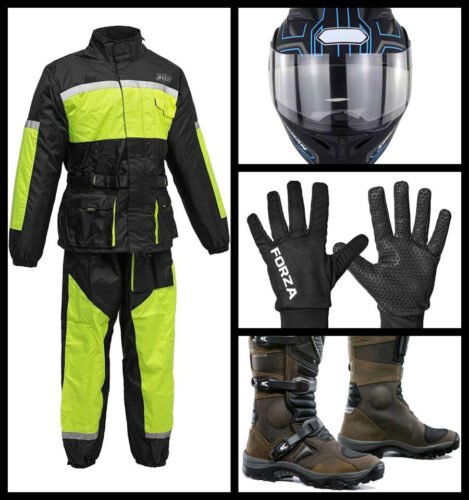
essential gear for bad conditions
8. Handling Emergencies: Stay Calm, Stay Safe
Even with preparation, emergencies happen.
Skid Recovery
- Front-wheel skid: Ease off the front brake.
- Rear-wheel skid: Keep the handlebars straight and release the rear brake.
Brake Failure
- Downshift gradually to slow the bike.
- Use engine braking and pump the brakes (if non-ABS).
9. Mental Preparedness: Ride Smart
Your mindset matters as much as your skills.
Stay Focused
- Avoid distractions like music or phone calls.
Know When to Stop
- If conditions worsen, pull over safely.
FAQs: Quick Answers to Common Questions
Q: What’s the safest speed for riding in the rain?
A: 10–15 mph below the posted limit. Adjust based on visibility and road texture.
Q: Can I use regular street tires on gravel?
A: Not recommended. Street tires lack the tread depth needed for loose surfaces.
Q: How do I recover from a fishtail?
A: Gradually release the throttle—don’t brake—and steer into the skid until stability returns.
Conclusion
Bad Road Conditions put your skills to the challenge, yet if you prep and practice tons, you'll get through them with no sweat. Make sure to keep your ride well-maintained, tweak how you ride, and don't skimp on good equipment. Keep in mind, the goal isn’t just to survive the ride—it’s to enjoy it, no matter what the road throws your way.
Stick to these pointers, and you're not just boosting your safety levels but also getting braver to face any kind of ground. Stay sharp, be ready for anything, and always land wheels on the ground!

With over 10 years of experience working on cars and trucks Item Training Supervisor Richard Reina is known around the office as one of our technical experts & real an "automobile person".
His rate of interest began, in his very own words, "at the age of two when his father educated him the distinction in between a Chevy and a Ford. Since then it's been cars regularly."
As a serious lover of practically all things with a motor Richard can address nearly any kind of inquiry related to car upkeep, fixing, or restoration & is a fact professional in electric motor background.
E-bikes have transformed into more than just gadgets to help you get around. Now, they're speed demons that can go toe-to-toe with motorbikes. It’s 2025, and these speedy machines have gotten a huge boost from better motors, more powerful batteries, and sleek designs that cut through the air like a knife. Let’s dive into the […]
Many riders who aren't so tall or ladies just starting to ride bikes need to pick out the best Motorcycles for Short Riders and Women. They gotta look for three key things: a seat that's not too high up, a bike that's not too heavy, and something that looks good enough to give them confidence. […]
As we accelerate into 2025, motorbikes are getting a serious tech upgrade. They’re all about safer rides and more fun on the road. Even if you’re a pro or just starting, kitting out your two-wheeler with cool tech stuff is a game-changer. Check out these ten top motorcycle gadgets each motorcyclist will want in 2025. […]
Getting around the city every day can be super annoying. You've got traffic like molasses nowhere to park, fuel prices through the roof, and buses stuffed like sardine cans make heading to the office a real pain. For loads of folks, getting a motorcycle is a pretty slick move—they’re nimble, cost-effective, and perfect for squeezing […]
Rider safety demands motorcycle helmets. Yet, riders still clash over picking full-face vs open-face helmets. Full-face ones take the win for protecting in crashes, but open-face models charm folks who want cool looks better air, and that old-school vibe. This guide dives into the latest research, technological advancements, and real-world insights to help you decide […]

